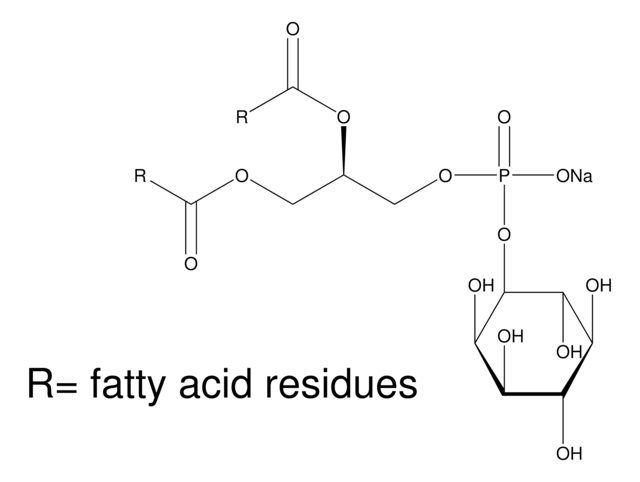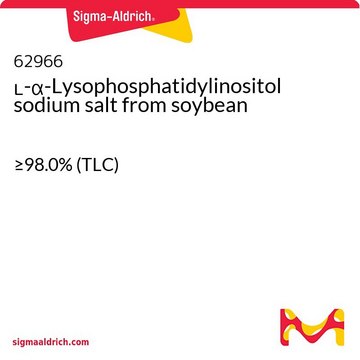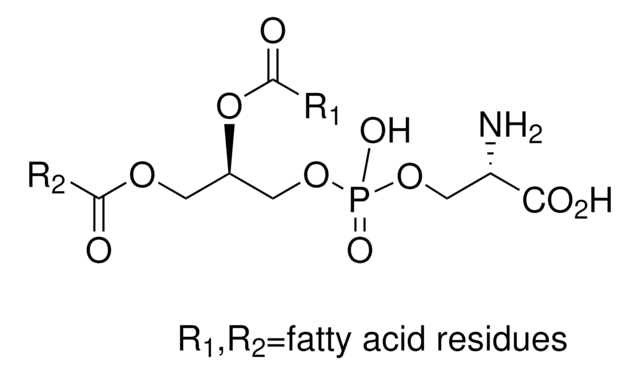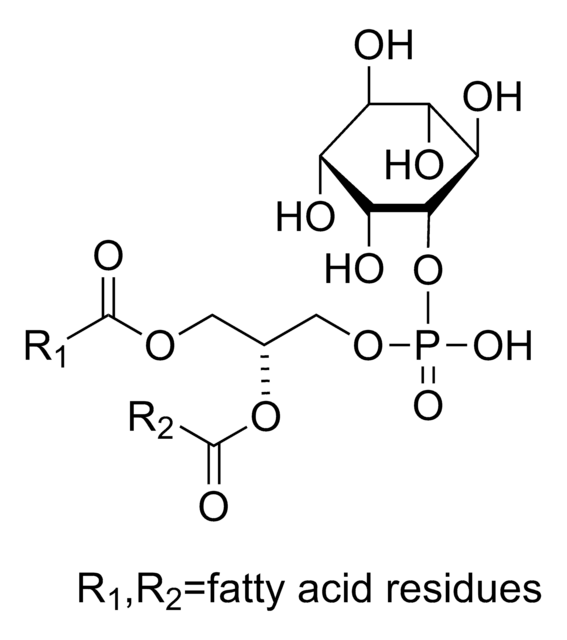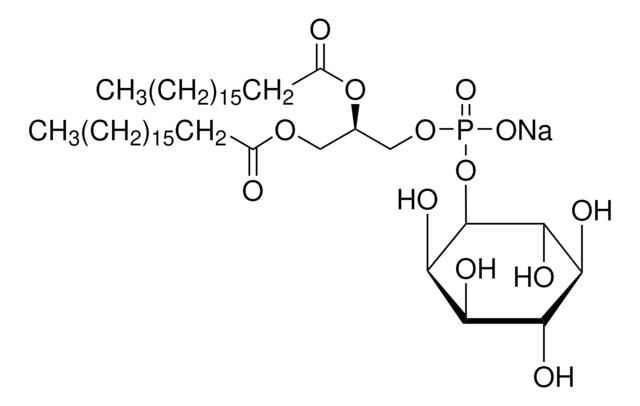推荐产品
生物源
soybean
化驗
≥96%
形狀
powder
官能基
phospholipid
脂質類型
phosphoglycerides
運輸包裝
ambient
儲存溫度
−20°C
應用
L-α-Lysophosphatidylinositol sodium salt from Glycine max (soybean) has been used as an agonist of G protein-coupled receptor 55 (GPR55).
生化/生理作用
L-α-Lysophosphatidylinositols (LPI) functions as an endogenous ligand for putative cannabinoid receptor and G protein-coupled receptor 55 (GPR55). LPI plays a regulatory role in cell proliferation, migration and function. Increased circulatory levels of LPI has been observed in the obese patients. In addition, overexpression of LPI leads to the development of various types of cancers including ovarian and breast cancer. LPI can be used as a potential diagnostic and prognostic biomarker for ovarian cancer.
L-α-Lysophosphatidylinositols from Glycine max (soybean) are enriched with stearate and palmitate. Soybean Lysophosphatidylinositols may be compared with other lysophosphatidylinositol for biological activities which depend upon the identity of the acylated fatty acid.
品質
Contains primarily palmitic and stearic acids.
準備報告
Prepared by the action of phospholipase A on L-α-phosphatidylinositol.
儲存類別代碼
11 - Combustible Solids
水污染物質分類(WGK)
WGK 3
閃點(°F)
Not applicable
閃點(°C)
Not applicable
個人防護裝備
Eyeshields, Gloves, type N95 (US)
Lysophosphatidylinositol stimulates [³⁵S]GTPγS binding in the rat prefrontal cortex and hippocampus.
Maria Luisa Rojo et al.
Neurochemical research, 37(5), 1037-1042 (2012-01-25)
Lysophosphatidylinositol (LPI) is a biologically active lipid that produces a number of responses in cultured cells, and has been suggested to have neuroprotective properties in vivo. Some of the actions of LPI are mediated by G-protein coupled receptors, but it
The L-alpha-lysophosphatidylinositol/GPR55 system and its potential role in human obesity
Moreno-Navarrete J, et al.
Diabetes, 61(2), 281-291 (2012)
The endocannabinoids anandamide and virodhamine modulate the activity of the candidate cannabinoid receptor GPR55
Sharir H, et al.
Journal of Neuroimmune Pharmacology, 7(4), 856-865 (2012)
Haleli Sharir et al.
Journal of neuroimmune pharmacology : the official journal of the Society on NeuroImmune Pharmacology, 7(4), 856-865 (2012-03-29)
The role of cannabinoid receptors in inflammation has been the topic of many research endeavors. Despite this effort, to date the involvement of the endocannabinoid system (ECS) in inflammation remains obscure. The ambiguity of cannabinoid involvement may be explained by
A novel biological role for the phospholipid lysophosphatidylinositol in nociceptive sensitization via activation of diverse G-protein signaling pathways in sensory nerves in vivo
Gangadharan V, et al.
Pain, 154(12) (2013)
我们的科学家团队拥有各种研究领域经验,包括生命科学、材料科学、化学合成、色谱、分析及许多其他领域.
联系技术服务部门